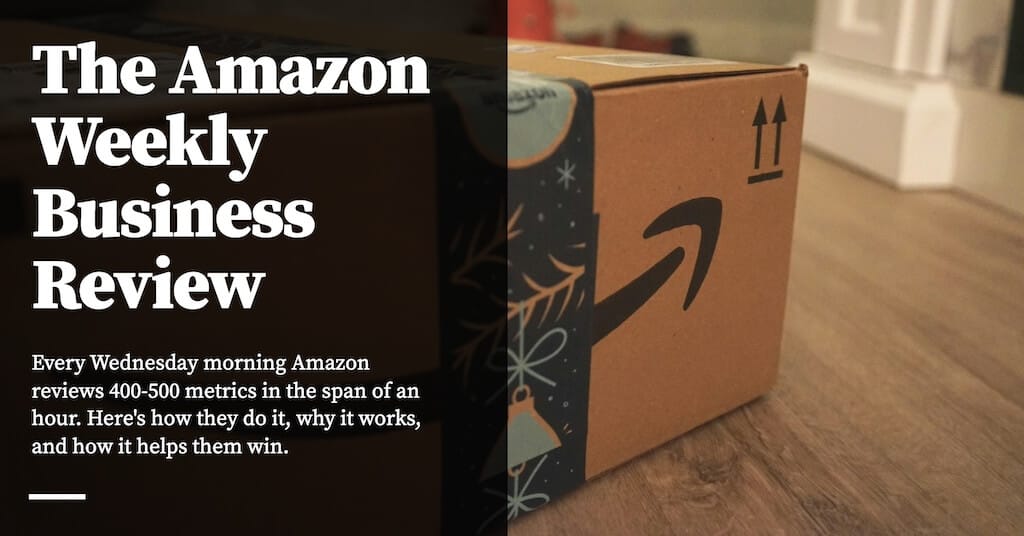
Metadata
- Author: Commoncog
- Full Title:: The Amazon Weekly Business Review (WBR)
- Category:: 🗞️Articles
- Document Tags:: Wbr,
- URL:: https://commoncog.com/the-amazon-weekly-business-review/
- Finished date:: 2024-12-19
Highlights
The Amazon-style WBR is designed to answer three questions:
- What did our customers experience last week?
- How did our business do last week?
- Are we on track to hit targets? (View Highlight)
input-focused metrics that measure the specific activities teams need to perform during the year that, if achieved, will yield the desired business results (View Highlight)
At many companies, when the senior leadership meets, they tend to focus more on big-picture, high-level strategy issues than on execution. At Amazon, it’s the opposite. Amazon leaders toil over the execution details and regularly embody the Dive Deep leadership principle, which states: “Leaders operate at all levels, stay connected to the details, audit frequently, and are skeptical when metrics and anecdotes differ. No task is beneath them.” (View Highlight)
the point is that you know that the WBR works partly because targets are part of the meeting. (View Highlight)
The metrics in a WBR are not static — you are expected to add or discard controllable input metrics as they stop working (that is, you continue to drive them, but they stop showing an effect on the corresponding output metric) (View Highlight)
your metrics must be laid out in a logical, causal way: controllable input metrics at the start of the deck, corresponding output metrics immediately after; and then rinse and repeat your input and output metrics for each major initiative or department, ending with financial metrics at the end. As an example of what this might look like: for publication or e-commerce companies, typically the deck opens with web + mobile traffic, flows into customer engagement (or various other metrics, depending on the specifics of your business), and then ends with financials on the other end. (View Highlight)
The WBR is exception-driven. This means that you really only discuss exceptional variation: (View Highlight)
The 6-12 Graph (View Highlight)
Colin liked to say that at Amazon, absolute values were often not as important as rates. (View Highlight)
6-12 Graphs are used for nearly everything in the Amazon-style WBR. (View Highlight)
At this point it’s worth dwelling on the nature of the WBR as a process control tool. Yes, the explicit goal of the WBR is to answer the three questions we’ve mentioned earlier in this essay. But we’ve discussed how process control forces teams to execute better, because they push operators to search for controllable inputs. This leads to an interesting use case for the WBR: if you want a particular business function to step up and shape up, you throw the WBR at it. (View Highlight)
The WBR Core Loop (View Highlight)
Collectively, we should have recognized that many of the areas being measured were not yet operationally under control and predictable. Many of the teams had skipped the first three DMAIC steps—define, measure, analyze—in an attempt to operate at the Improve stage. They ended up chasing blips on a graph with not much to show for their effort. We should have—politely and constructively!—recommended they do the necessary legwork to convert their metrics from noise to signal. (View Highlight)